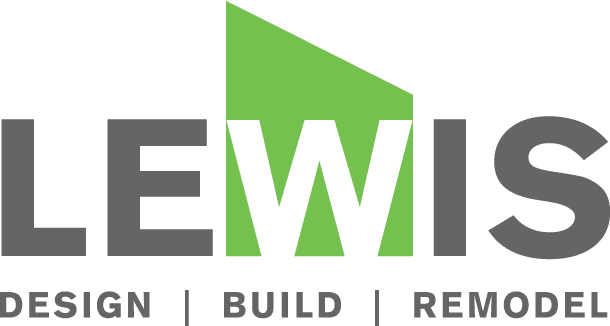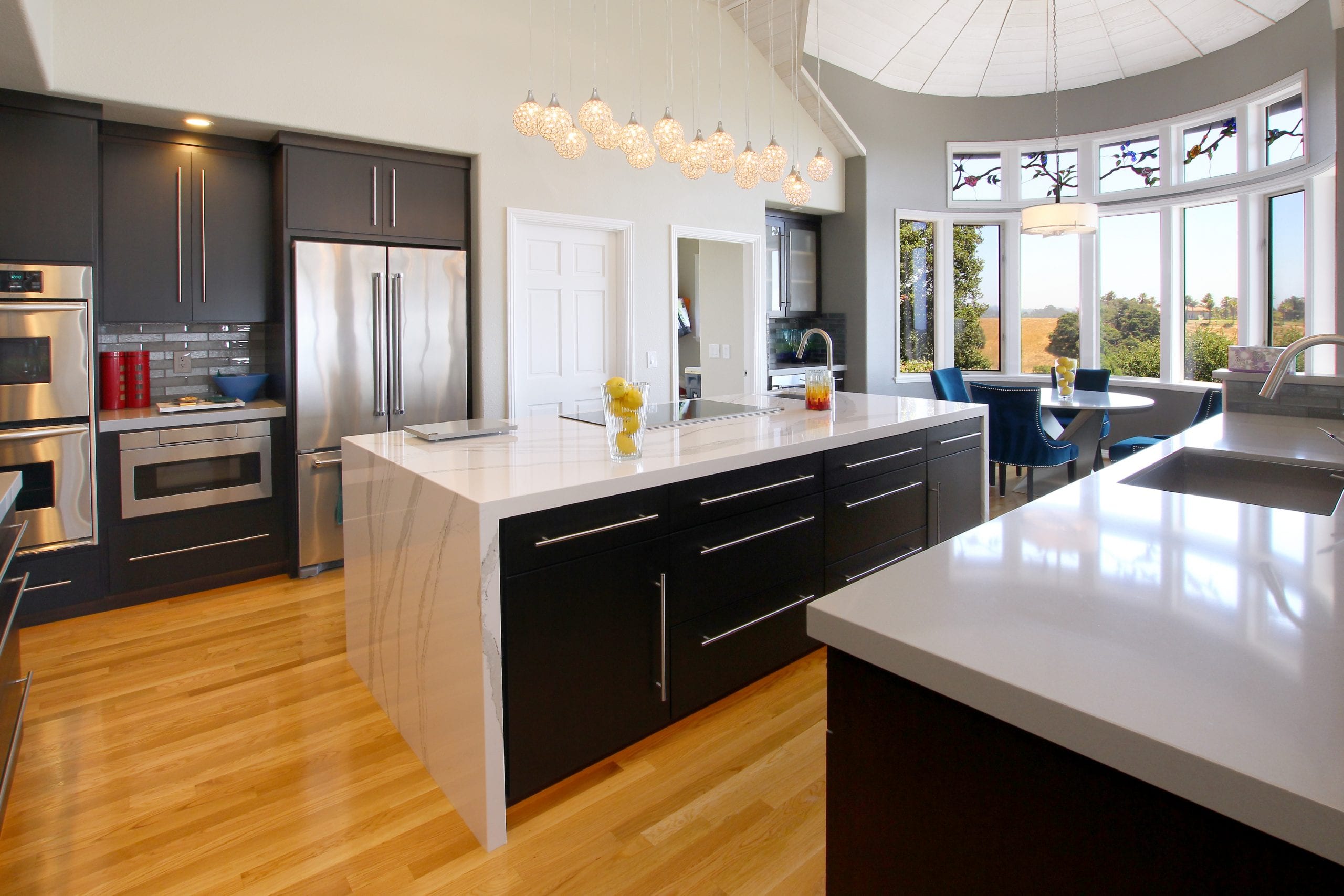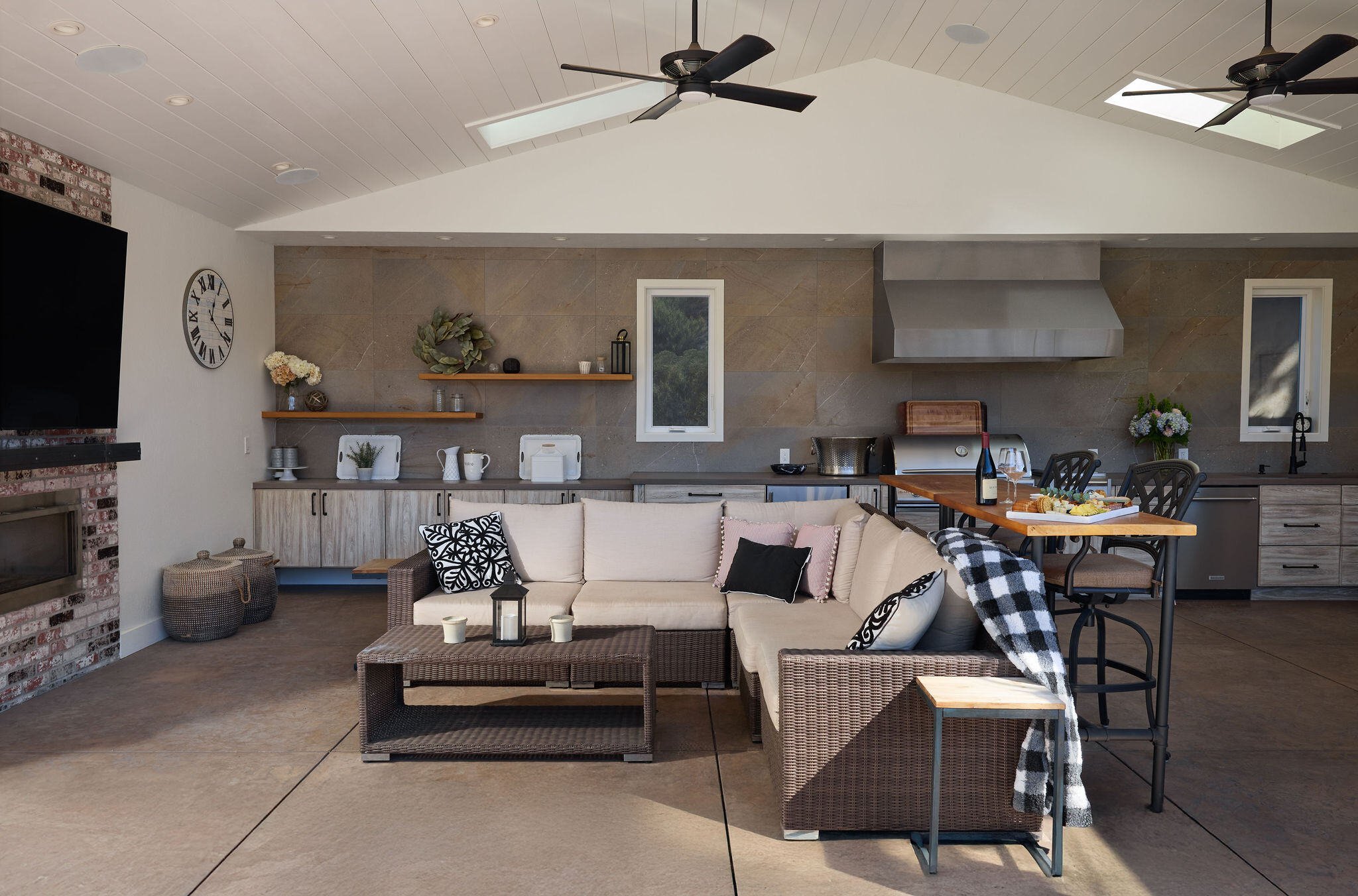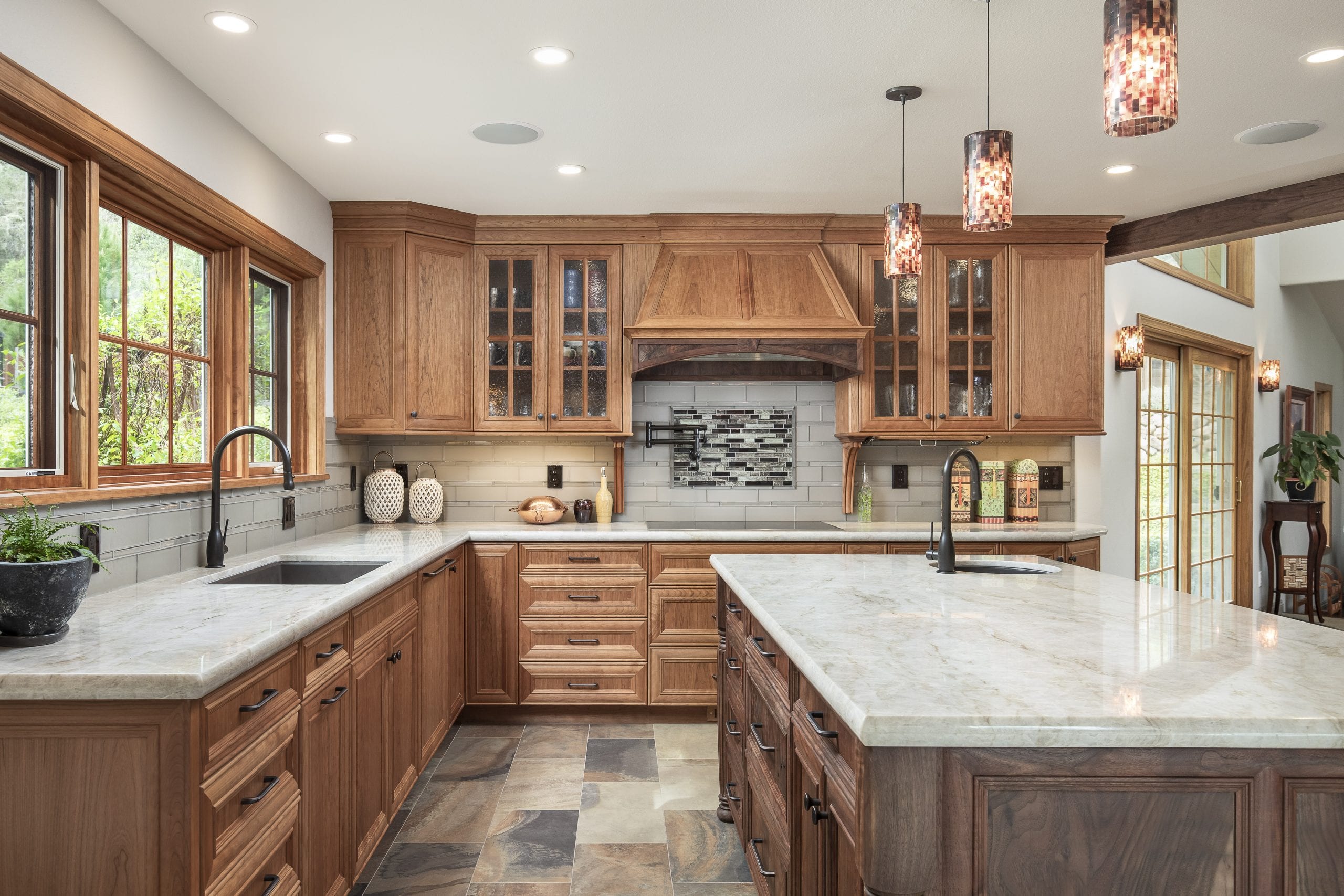The kitchen is the heart of every home. It's a place for culinary creativity, family gatherings, holiday celebrations, and so much more. However, with all that activity comes the potential for accidents and occasional chaos. A well-designed kitchen prioritizes safety alongside style and functionality. If you're planning a kitchen remodel in Santa Cruz, consider incorporating these techniques to create a secure and enjoyable cooking environment.
1. Illuminating Safety: Proper Lighting is Key
A poorly lit kitchen is a recipe for disaster. Shadows can obscure spills, sharp utensils, and tripping hazards. Investing in a layered lighting approach is essential:
- Ambient Lighting: General overhead lighting to illuminate the entire space. Recessed lighting or pendant fixtures are excellent choices.
- Task Lighting: Focused light for specific work areas, such as under-cabinet lighting for countertops, pendant lights over the island, and track lighting above the stovetop.
- Accent Lighting: Decorative lighting to highlight architectural features and create a warm ambiance.
- Motion-activated lighting: This is a great addition to a pantry or under cabinets.
Proper lighting reduces the risk of cuts, burns, and falls, making your kitchen a safer place to navigate.
2. Powering Up Safely: Electrical Outlets and GFCI Protection
Electrical safety is paramount in a kitchen, where water and appliances are often nearby.
- GFCI Outlets: Ground Fault Circuit Interrupter (GFCI) outlets are crucial near sinks, dishwashers, and any area prone to moisture. They instantly cut power in case of a ground fault, preventing electrical shocks.
- Adequate Outlets: Install sufficient outlets to avoid overloading circuits with extension cords. Strategically placed outlets make it easier to plug in appliances without creating tripping hazards.
- Dedicated Circuits: Heavy-duty appliances like ovens and refrigerators should have dedicated circuits to prevent overloads and potential fires.
3. Stovetop Safety: Reducing Burn Risks
The stovetop is a frequent source of burns and fires. Consider these safety features:
- Induction Cooktops: Induction cooktops heat the cookware directly, leaving the surface relatively cool, and help reduce the risk of accidental burns.
- Clearance: Maintain adequate clearance between the stovetop/oven and combustible materials, such as curtains or paper towels.
- Gas Safety: If you have a gas stove, ensure proper gas line connections and check for leaks regularly. Install a carbon monoxide detector to alert you to potential gas leaks.
4. Staying Grounded: Anti-Slip Flooring
Slippery floors are a major hazard in a kitchen, especially with spills and moisture.
- Textured Tiles: Opt for tiles with a textured surface, such as a matte-finished slate or porcelain.
- Rugs and Mats: Use rugs or mats in high-traffic areas and near sinks to provide extra traction.
- Avoid High-Gloss Finishes: High-gloss finishes can become extremely slippery when wet.
5. Fire and Ventilation: Preventing and Managing Hazards
Proper ventilation and fire safety measures are essential to prevent and manage kitchen fires.
- Range Hoods: A powerful range hood is crucial for venting smoke, grease, and fumes outside.
- Fire Extinguisher: Keep a fire extinguisher readily accessible near the stovetop.
- Smoke Detectors: Install smoke detectors in the kitchen and adjoining areas. Test them regularly.
- Ventilation: Ensure proper ventilation to avoid the build-up of flammable gases.
6. Softening the Edges: Mitered Countertop Edges
Sharp countertop edges can cause painful bumps and bruises. To create softer edges while maintaining an aesthetic and stylish appeal, Lewis Design Build Remodel typically uses a mitered edge for kitchen countertops.
- Mitered Edges: This strategy joins two pieces of material with a 45-degree angle to make a seamless edge, creating a safer and more durable countertop.
- Material Selection: Certain materials, like quartz, are more durable and less prone to chipping or cracking, which can create sharp edges.
By incorporating these safety-conscious remodeling techniques, you can transform your kitchen into a secure and enjoyable space for cooking, gathering, and creating lasting memories. Remember to consult with a qualified professional, like Lewis Design Build Remodel (LDBR), to ensure proper installation and adherence to building codes. A safe kitchen is a happy kitchen!
For more information, please visit our website and download our eBook: ‘A Guide To Hiring A Remodeler.’ Our eBook Guide provides additional resources and includes helpful Worksheets that will make the process of Picking the Right Remodeling Expert For the Job stress-free. To get your own project started, get in touch with us or give us a call at (831) 566-9499.




